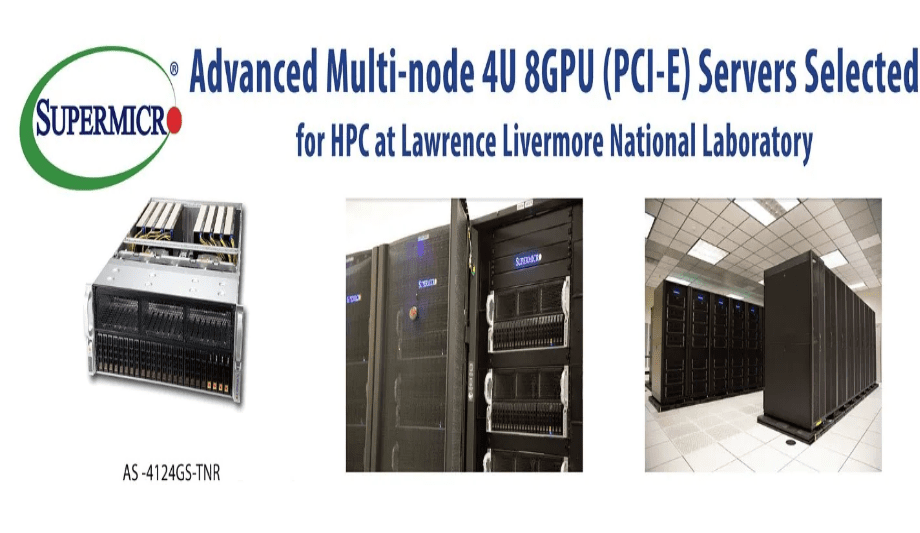Super Micro Computer, Inc. (Nasdaq: SMCI), a provider of enterprise computing, storage, networking solutions and green computing technology, announced that LLNL selected Supermicro to provide additional computing capacity and resources for scientists working to find a cure for COVID-19.
Supermicro’s 4U 8 GPU servers for this cluster equipped with nearly 1,000 AMD Radeon Instinct™ MI50 graphics accelerators and, combined with AMD’s state-of-the-art EPYC™ 7002 CPUs, expands the cluster to deliver up to 11 Petaflops of computing power for advanced computational workloads.
Authority comment
“Our market-pioneer 4U 8-GPU servers are optimised for low-latency accelerators performance that leverage our flexible server Building Block Solutions® approach, which enabled LLNL to customise their cluster requirements,” said Charles Liang, president and CEO of Supermicro."
“We are extremely pleased to be working with LLNL to help researchers and scientists find a vaccine for the devastating COVID-19 pandemic—one of the most critical issues facing society."
"It’s a great pleasure to work with pioneer organisations requiring high-performance computing (HPC) clusters and machine learning technology to perform advanced computational workloads and conduct groundbreaking research.”
Handling computationally intensive molecular
The computing power allows researchers to better handle the computationally intensive molecular dynamics simulations
The US Department of Energy is expanding the Corona supercomputer — named for the total solar eclipse of 2017 — with funding from the Corona Aid, Relief and Economic Security (CARES) Act.
The additional computing power is allowing researchers to better handle the computationally intensive molecular dynamics simulations, which are critical to finding a cure.
Predictive biomedical modeling
“The Corona system is a major advance in our capability for predictive biomedical modeling for COVID-19,” said LLNL Deputy Associate Director for Programs Jim Brase, who heads the Lab’s COVID-19 research and rapid response effort.
“It allows us to develop advanced simulations of the structure and function of the virus and to use largescale machine learning to discover and optimise new therapeutics. This performance boost will help the Corona system lead the way in accelerating pandemic response.”
Scientists leveraging new compute capacity
“We are excited to collaborate with Supermicro to deliver advanced, AMD-based high-performance computing (HPC) systems to LLNL for pandemic research,” said Forrest Norrod, senior vice president and general manager of the Datacentre and Embedded Solutions Business Group at AMD.
“Our AMD EPYC CPUs and AMD Radeon Instinct GPUs will enable scientists to leverage new compute capacity for computational workloads in genomics, vaccine development and other scientific disciplines.”






















